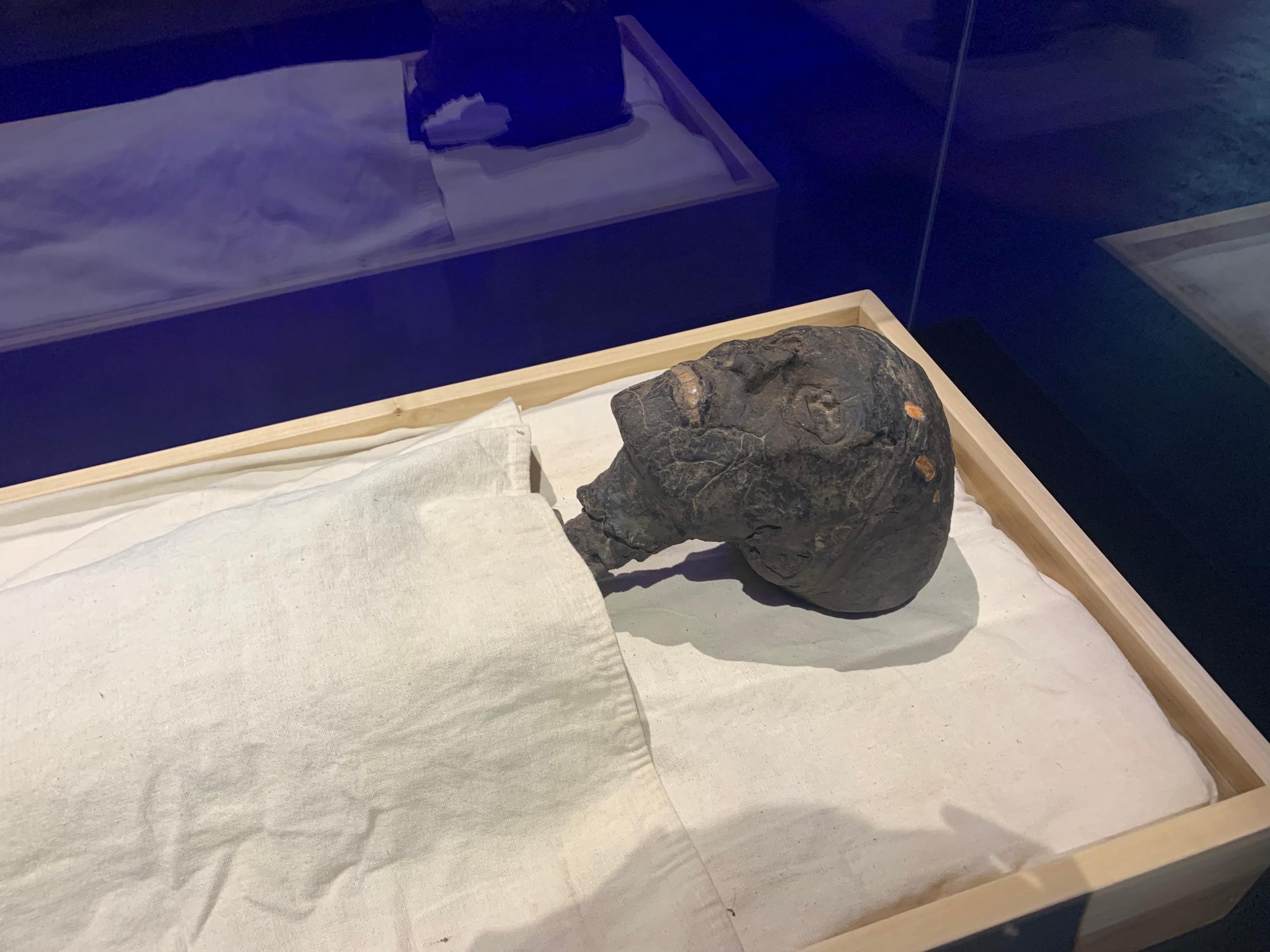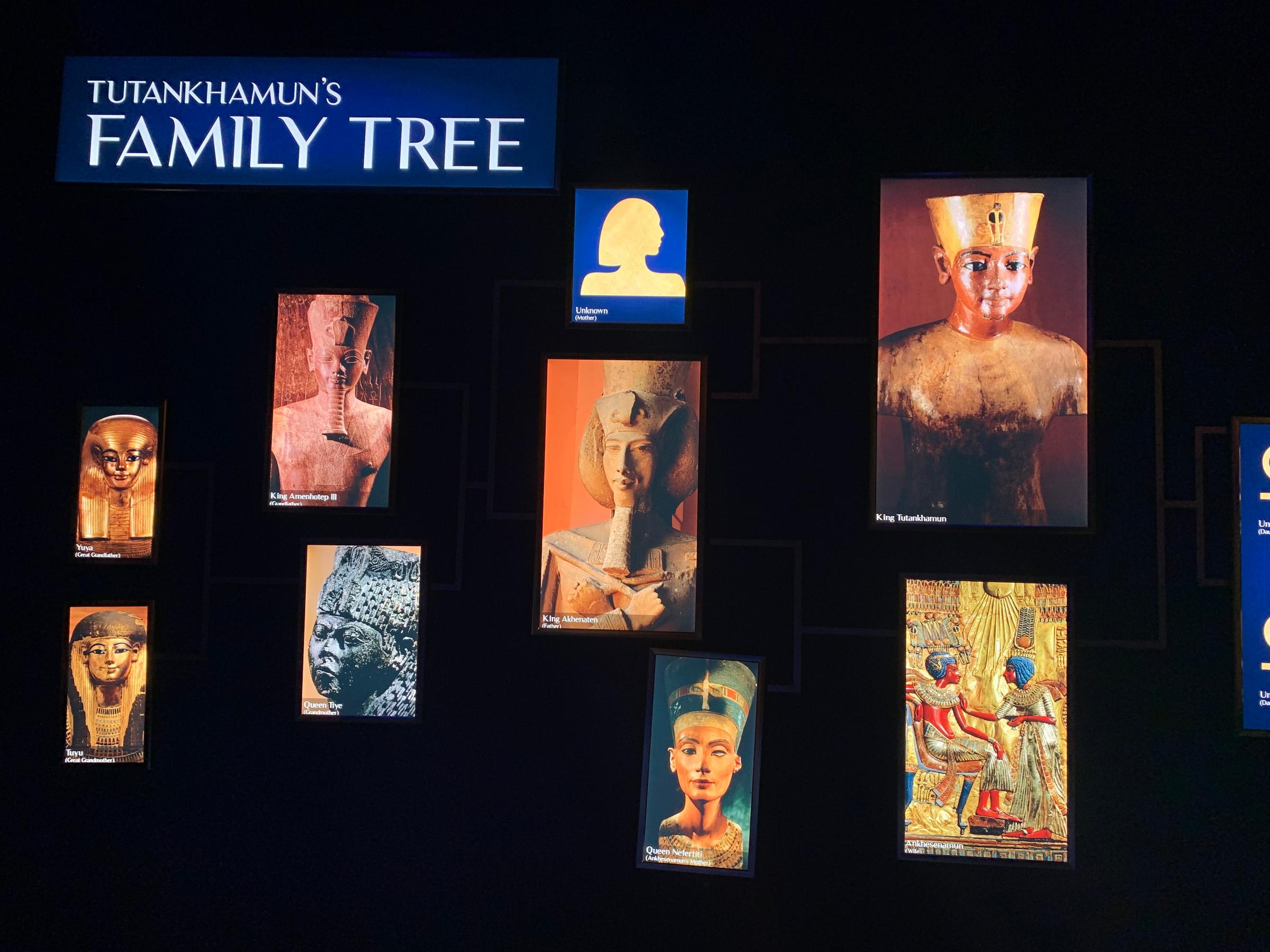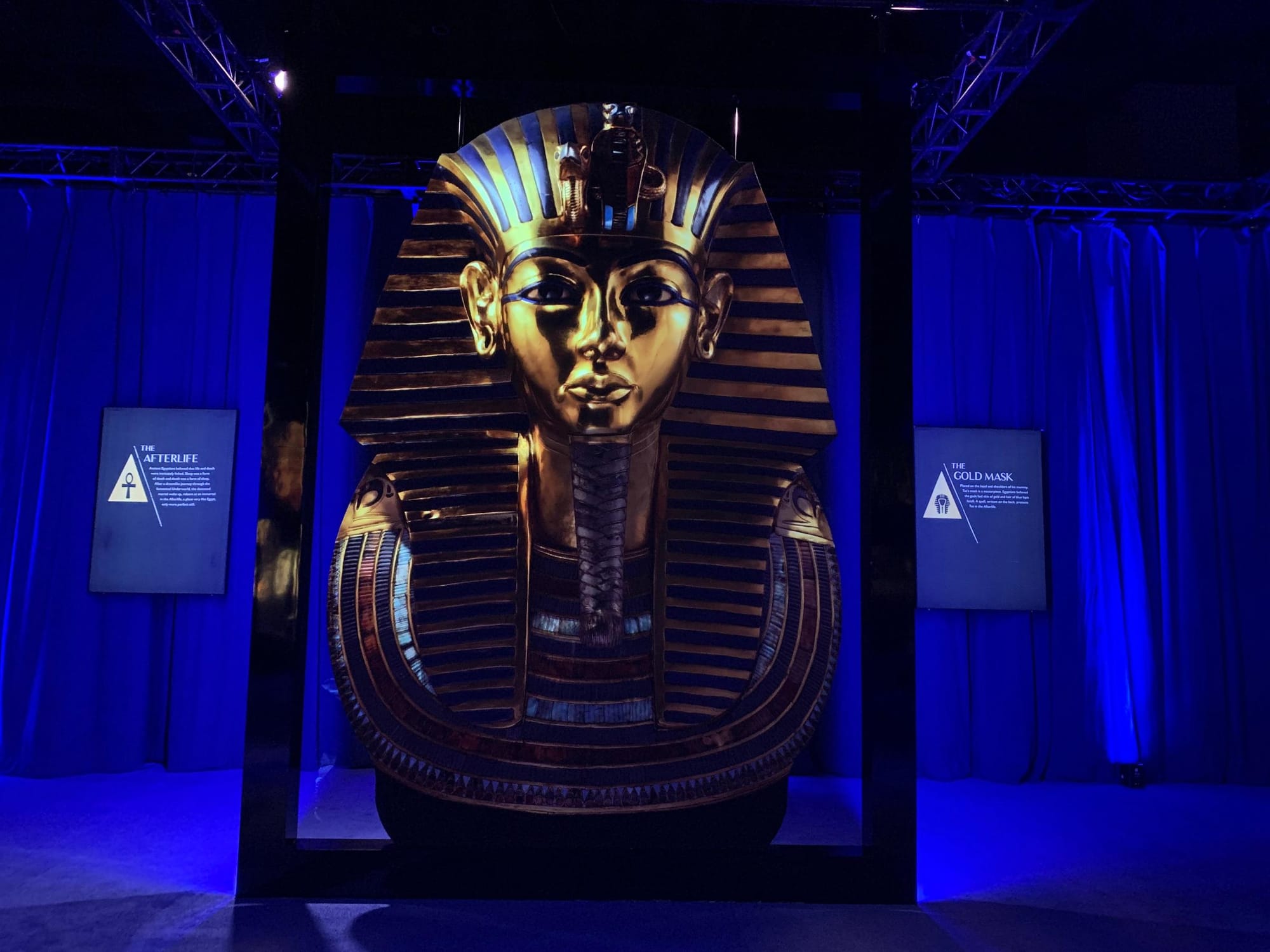What happens to us when we die?
Cultures across time have attempted to answer that question, combining the beginning of all things with the end of our mortal lives in complex mythologies. One of the most enduring mythologies is that of the ancient Egyptians. The symbology of Egypt is known all over the world, from pyramids to mummies, all designed to answer the unanswerable. And the most well-known human symbol of the journey into death is the boy King, Tutankhamun.
Tutankhamun is a fascinating figure because his death is more famous than his life. There is little known about how he ruled as pharaoh, what his day-to-day life was like, or even how he died. For us living 3,000 years later, his story doesn’t begin until after the fateful event that took his life at the young age of 19. The exhibit Beyond King Tut: The Immersive Experience, on view through mid-October at the Connecticut Convention Center, seeks to give visitors a glimpse into the death and eternal life of one of ancient Egypt’s most famous kings.
Beyond King Tut: The Immersive Experience
The Connecticut Convention Center
Through Oct. 15
Beyond King Tut lives up to its name as an immersive experience, transforming the second floor of the Convention Center into a three-dimensional theater where every area of the exhibit is part of the show. The exhibit features extremely detailed replicas of some of the 5,398 objects found in the king’s tomb. (The originals are located in museums in Egypt.)

There’s even a replica of the boy King himself, preserved by the intricate embalming and mummification process that ancient Egypt is so well known for.

The exhibit contains a wealth of knowledge about the king, his family, and the era they lived in. I learned that not only was King Tutankhamun married well before his 19th birthday, but he and his wife Ankhesenamun had two children, although both were stillborn. To top it off, they were half-siblings, which was a common practice at the time; Tutankhamun’s own parents were siblings as well.

But the real draw of the show are the short films that pepper the exhibit. These films are based on extensive research done by Egyptologists and scholars over the last hundred years. They illustrate the story of Tutankhamun’s journey into the afterlife using the mythology of ancient Egypt. The films move across screens on all four walls of the room, immersing the viewer in a panoramic wave of images and sounds.
The ancient Egyptians succeeded in their mission. King Tutankhamun has achieved immortality: 3,000 years later, he still commands the respect and attention of an audience even beyond the millions he ruled over during his life. He lives on in our imagination, and his legacy will endure far beyond most of us who live today. As far as mythological afterlives go, the ancient Egyptians version doesn’t seem so bad.
Next: Beyond King Tut: The Immersive Experience continues at the Connecticut Convention Center through Oct. 15.
Jamil heads next to Elicit brewery for some high society entertainment.






